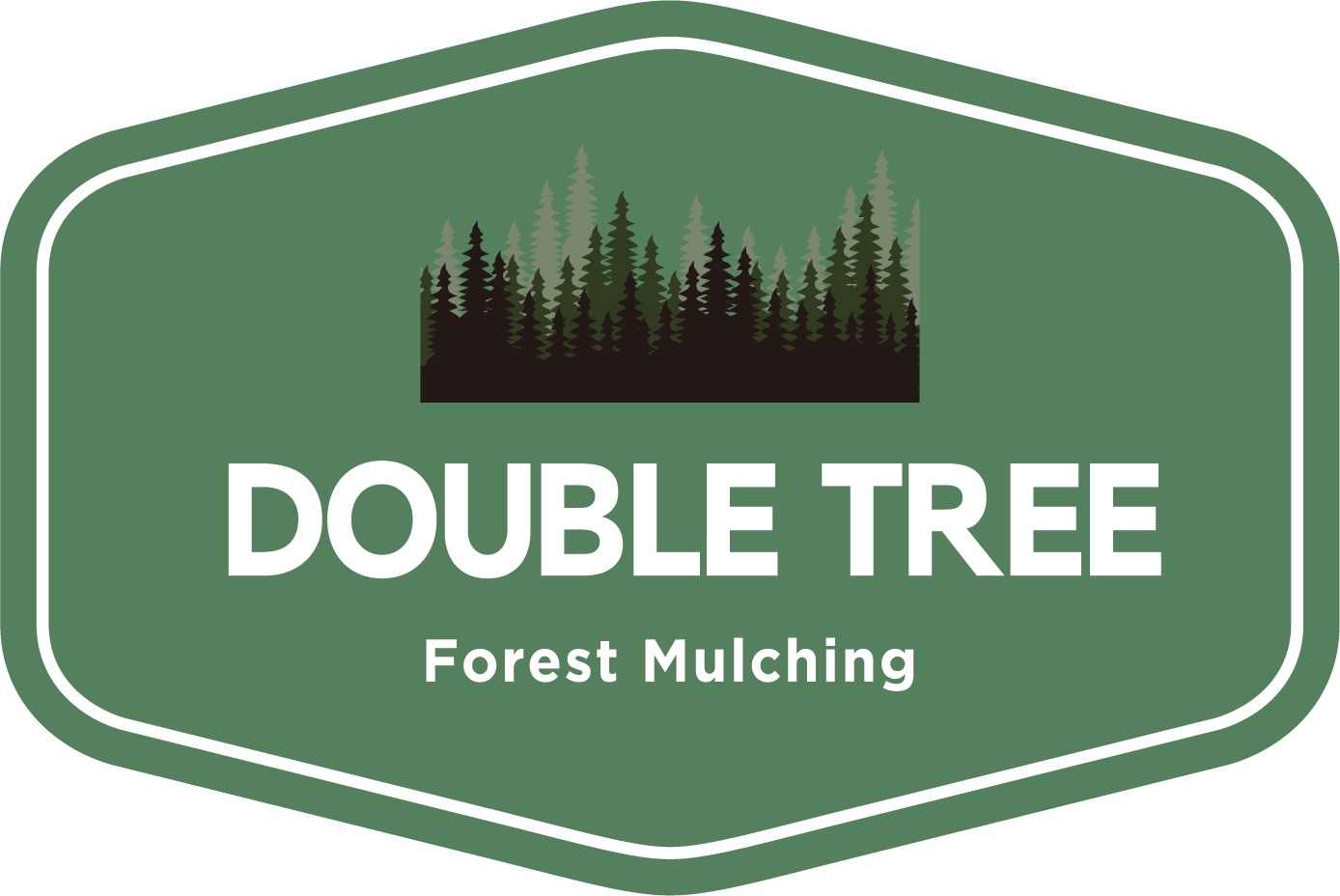Forest Mulching
Forest mulching involves removing undesirable trees, brush, stumps, and forest debris by grinding into a re-useable mulch. The mulch is spread evenly to help reduce erosion and add nutrients to the soil.

Double Tree Forest Mulching reduces forest fire fuels helping with wildfire prevention and management, helps with right-of-way clearing and maintenance, land clearing, wetland, and riparian habitat conservation, invasive species control.
With our equipment, we are able to clear the land of unwanted trees and brush with limited disturbance to soils or desirable vegetation.
Call Today to Request a Free Estimate
(509) 710-4644
Three Benefits of Forestry Mulching
1. Reduces impact to the landscape
Traditional methods of land clearing make it difficult to selectively clear areas of the property. Mulching, on the other hand, can be done on a plant-by-plant basis. Each tree or shrub in question is mulched at its original spot, reducing the amount of heavy equipment that needs to be brought on-site and preserving the nearby plant life.
2. Prevents Erosion
Other land clearing services leave large swaths of bare dirt behind after work is completed. During wind and rainstorms, the dirt can wash away, creating an erosion issue on your land. By using forestry mulching to clear your land, you’ll reduce the risk of erosion significantly. The mulch keeps the soil in place while protecting the root systems of ground-cover plants and natural grasses. Over time, this helps keep your property’s drainage in good shape and preserves the health of the environment.
3. Long-Term Improvement to the Soil
If you’ve ever looked in a garden bed, you’ve probably noticed a layer of mulch spread on top of the soil. This helps slowly give the soil the nutrients it needs to help plants thrive. Forestry mulching accomplishes much the same effect. Once the shrub or tree is mulched, the nutrients from the wood slowly get deposited in the soil. After a while, this enriches the soil while also reducing the risk of mold and fungus damaging still-standing trees.
